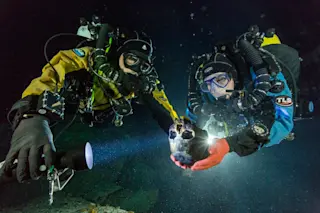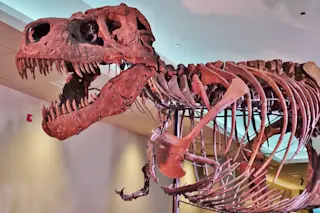Divers transport the Hoyo Negro skull to an underwater turntable so that it can be photographed in order to create a 3-D model. The project was supported by the National Geographic Society. Photo Credit: Paul Nicklen/National Geographic. An ancient human skeleton discovered in an underwater Mexican cave has answered a crucial question about early Americans: How they came to look so different from their Siberian ancestors. Genetic studies have pointed to a Siberian ancestry for modern Native Americans. Most researchers believe the first Americans (Paleoamericans) migrated from northeast Asia via Beringia, the now-submerged land bridge between present-day Siberia and Alaska, some 18,000-26,000 years ago. But the facial features of the oldest American skeletons don’t look much like those of modern Native Americans. This has inspired a number of controversial counter-theories claiming the Americas were first settled by people from elsewhere in Eurasia. Now, the near-complete skeleton of a teenaged girl, ...
Ancient Cave Skeleton Sheds Light on Early American Ancestry
The Hoyo Negro skeleton unveils vital links among Native Americans, revealing shared genetic traits that confirm Paleoamerican features.
More on Discover
Stay Curious
SubscribeTo The Magazine
Save up to 40% off the cover price when you subscribe to Discover magazine.
Subscribe













